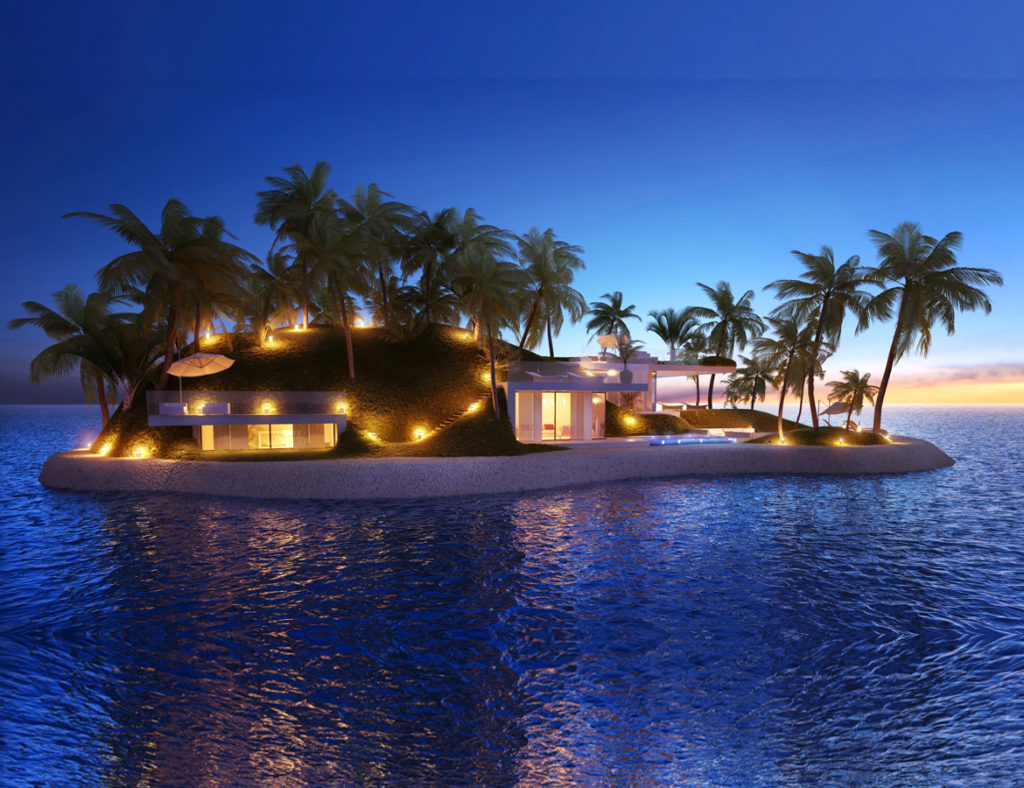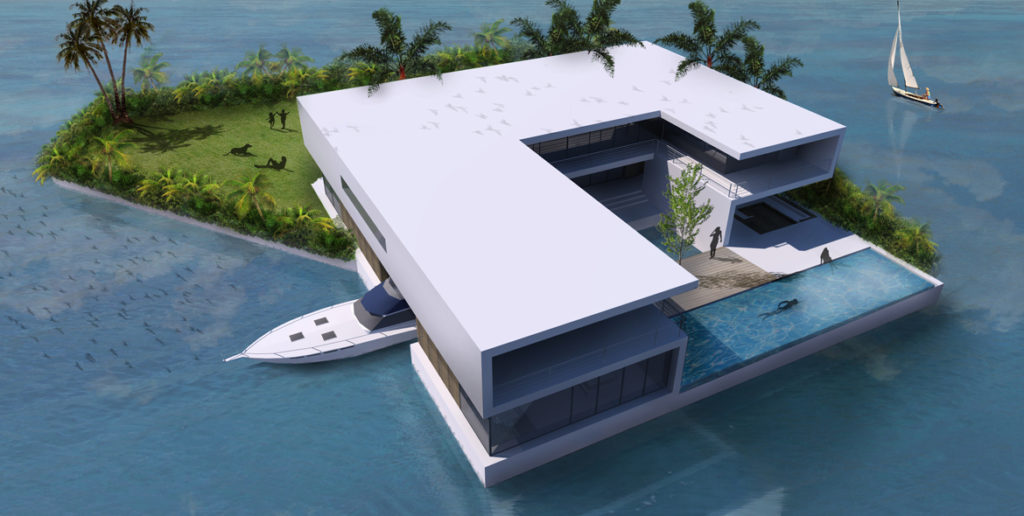
Architects Worldwide Invent Groundbreaking Waterborne Solutions To Climate Change, Part 3
By Forbes
December.12.2018
Photo credits: Waterstudio
There are two groups of people in the world who live by the water’s edge: the extremely rich and the extremely poor. For one, it’s a lifestyle choice; for the other, they rely on the water for their livelihoods. They can’t relocate away from the waterline, as land is often expensive and reserved for those who can afford it. Floating structures would give them the chance to continue living on the water rather than being displaced. In the vision of Dutch architect Koen Olthuis, founder of Waterstudio, large-scale floating developments could be invested in by wealthy nations like Qatar or Saudi Arabia not only for their own countries, but as global, mobile and flexible real estate, which may be leased to coastal cities. They could be floating hotels and stadiums for cities that wish to organize the Olympic Games but cannot afford it, or cities that have been hit by climate change-related disasters that can lease an entire set of floating functions like energy plants, hospitals, schools, sanitation systems, harbors and airports that may be towed from a safe floating location to devastated areas for rescue and relief. These are large-scale solutions to instantly upgrade cities and help communities recover with basic necessities within a couple of weeks, since they generally only invest money following a disaster.
Amillarah Private Islands at The World in DubaiCOURTESY OF ARCHITECT KOEN OLTHUIS – WATERSTUDIO.NL
Olthuis believes that the technology and money are already available, but it’s a matter of changing mindsets before waterborne developments become a part of daily reality. He discloses, “Before a disaster, nobody wants to change. After a disaster, everybody wants to change. Either you wait for a disaster or you do something with floating structures where people see that they can already make money before a disaster. The role we have as architects is not just to design and engineer, but also to guide governments, municipalities and developers to show them how to finance, insure, change legal aspects and start to use floating structures in cities.”
From multimillion-dollar floating islands for rich clients that will allow Olthuis to gain knowledge, he hopes to spread water architecture to entire middle-class communities worldwide using the same technology, as well as to developing countries that are at even greater risk of flooding, which may apply simple urban plug-ins of basic functions to slums to improve lives immediately. For example, Dubai is investing heavily in designing and building on water. Waterstudio collaborated with oceanographer Jean-Michel Cousteau to conceive Amillarah Private Islands by developer Dutch Docklands in The World – Dubai’s artificial archipelago of over 300 islands in the shape of the world map, measuring nine kilometers by seven kilometers, that will include residences, commercial areas with resorts, transit hubs for ferries and a tourism zone – which will consist of 33 eco-friendly, luxury floating homes on concrete and polystyrene foundations, each with its own garden, pool, beach and underwater habitat for sea life to enhance livability above and below the surface.
Amillarah Private Islands in MiamiCOURTESY OF ARCHITECT KOEN OLTHUIS – WATERSTUDIO.NL
Completely stable on the water and built to last over a century, the man-made floating islands will be customizable to clients’ specifications. In the Maldives, Waterstudio has designed floating island resorts and a golf course for Dutch Docklands, which is working with the Maldivian government to reinforce society with long-term waterborne developments. Olthuis believes that floating islands with high-density affordable housing could be added to the existing islands to provide space and safety without any negative impact on the marine environment during or after their lifespans. Over the years, his work has evolved from designing for the superrich to designing for the poor in areas that have to adjust their planning approach because of climate change, as he hopes to improve the lives of millions instead of only the happy few.

